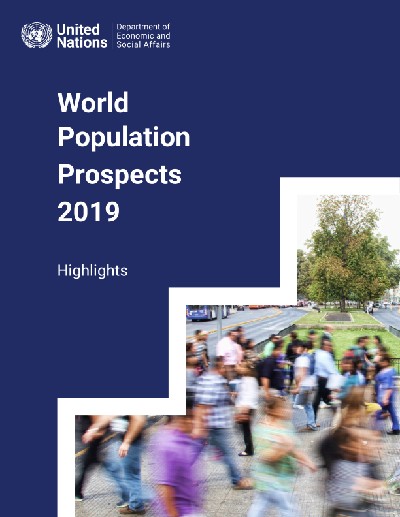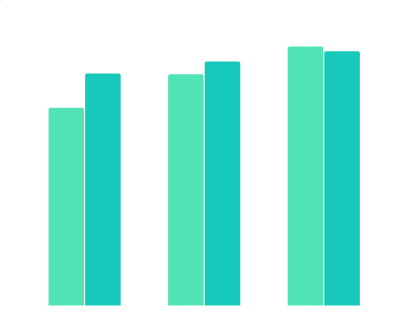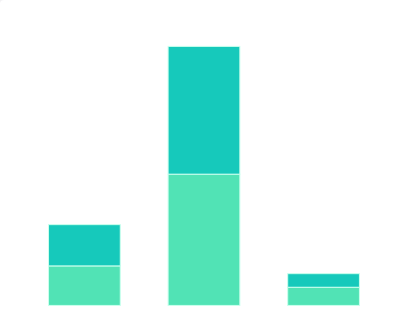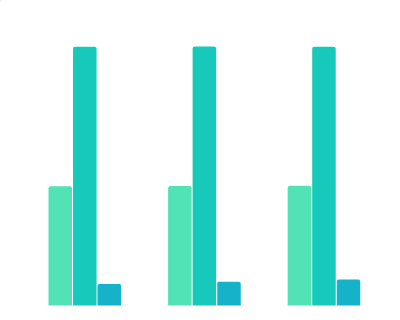"世界人口数据报告"相关数据
更新时间:2024-11-222019年世界人口展望
Understanding global population trends and anticipating the demographic changes to come are crucial to the achievement of the 2030Agenda for Sustainable Development. The 2030Agenda emphasizes that people are at the centre of sustainable development,echoing the ideals set forth in the Programme of Action of the International Conference on Population and Development adopted in Cairo in 1994.Population trends observed over the past few decades point to substantial progress made towards several of the Sustainable Development Goals (SDGs) so far.Examples include reduced mortality,particularly among children,as well as increased access to sexual and reproductive health care and enhanced gender equality that have empowered women to decide freely and responsibly the number,spacing and timing of their children.
Recent demographic trends are harbingers of the future challenges to sustainable development. For example,countries experiencing rapid population growth,most of which are in sub-Saharan Africa,must provide schooling and health care to growing numbers of children,and ensure education and employment opportunities to increasing numbers of youth. Countries where population growth has slowed or stopped must prepare for an increasing proportion of older persons and, in some cases,decreasing population size. These and other challenges can be addressed in part by anticipating coming demographic trends and incorporating that information into policies and planning.
The United Nations population estimates and projections form a comprehensive set of demographic data to assess population trends at the global, regional and national levels. They are used in the calculation of many of the key development indicators commonly used by the United Nations system,including for more than one third of the indicators used to monitor progress towards the achievement of the sDGs. The 2019 revision of the World Population Prospects is the twenty-sixth edition of the United Nations population estimate sand projections,which have been prepared since1951 by the Population Division of the Department of Economic and Social Affairs.The 2019 revision presents population estimates from 1950 until the present for 235 countries or areas, which have been developed through country-specific analyses of historical demographic trends. It builds on previous revisions by incorporating additional results from the 2010 and 2020 rounds of national population censuses as well as information from vital registration and recent nationally representative household surveys.The 2019 revision also presents population projections to the year 2100 that reflect a range of plausible outcomes at the global, regional and country levels.
【更多详情,请下载:2019年世界人口展望】

 公元前1万年-2021年世界人口数量该统计数据包含了公元前1万年-2021年世界人口数量。2021年全球的人口数量已经接近79亿人。2021年发布时间:2022-06-06
公元前1万年-2021年世界人口数量该统计数据包含了公元前1万年-2021年世界人口数量。2021年全球的人口数量已经接近79亿人。2021年发布时间:2022-06-06 截至2006年世界人口贩运被害人类型该统计数据包含了截至2006年世界人口贩运被害人类型。女性占比高达79%,其中妇女占66%,女孩占13%。2006年发布时间:2020-08-31
截至2006年世界人口贩运被害人类型该统计数据包含了截至2006年世界人口贩运被害人类型。女性占比高达79%,其中妇女占66%,女孩占13%。2006年发布时间:2020-08-31 1990-2100E世界人口总数增长情况该统计数据包含了1990-2100E世界人口总数增长情况。预计世界人口在未来15年内将增加超过10亿,到2030年将达到85亿,之后人口将继续增长,于2050年达到97亿,到2100年达到112亿。1990-2100年发布时间:2020-07-03
1990-2100E世界人口总数增长情况该统计数据包含了1990-2100E世界人口总数增长情况。预计世界人口在未来15年内将增加超过10亿,到2030年将达到85亿,之后人口将继续增长,于2050年达到97亿,到2100年达到112亿。1990-2100年发布时间:2020-07-03 截至2020年4月世界人口排名Top10该统计数据包含了截至2020年4月世界人口排名Top10。中国人口数量为1400050000人,名列第一位。2020年发布时间:2020-06-04
截至2020年4月世界人口排名Top10该统计数据包含了截至2020年4月世界人口排名Top10。中国人口数量为1400050000人,名列第一位。2020年发布时间:2020-06-04 2000年-2017年中国流动人口数量该统计数据包含了2000年-2017年全国流动人口数量。流动人口数量在2014年达到顶峰之后保持基本稳定。2000-2017年发布时间:2020-05-19
2000年-2017年中国流动人口数量该统计数据包含了2000年-2017年全国流动人口数量。流动人口数量在2014年达到顶峰之后保持基本稳定。2000-2017年发布时间:2020-05-19 1963-2016年中国与世界人均预期寿命历史变化情况该数据包含了1963-2016年中国与世界人均预期寿命历史变化情况。2016中国预期寿命(岁)为76.3岁,世界预期寿命(岁)为72.0岁。1963-2016年发布时间:2019-07-11
1963-2016年中国与世界人均预期寿命历史变化情况该数据包含了1963-2016年中国与世界人均预期寿命历史变化情况。2016中国预期寿命(岁)为76.3岁,世界预期寿命(岁)为72.0岁。1963-2016年发布时间:2019-07-11 2000年到2017年中国流动人口及农民工数量该统计数据包含了2000年到2017年全国流动人口及农民工数量。2014年后流动人口数量缓慢减少,农民工数量继续增加。2000-2017年发布时间:2020-08-07
2000年到2017年中国流动人口及农民工数量该统计数据包含了2000年到2017年全国流动人口及农民工数量。2014年后流动人口数量缓慢减少,农民工数量继续增加。2000-2017年发布时间:2020-08-07 2016年世界四大湾区人口数占全国人口数的比重情况本数据记录了2016年世界四大湾区人口数占全国人口数的比重情况,其中旧金山湾区占比2%。2016年发布时间:2019-11-29
2016年世界四大湾区人口数占全国人口数的比重情况本数据记录了2016年世界四大湾区人口数占全国人口数的比重情况,其中旧金山湾区占比2%。2016年发布时间:2019-11-29 1961年-2013年世界人均肉类食用量该统计数据包含了1961年-2013年世界人均肉类食用量。截至2013年全球人均肉类消耗量达到43千克。1961-2013年发布时间:2021-02-07
1961年-2013年世界人均肉类食用量该统计数据包含了1961年-2013年世界人均肉类食用量。截至2013年全球人均肉类消耗量达到43千克。1961-2013年发布时间:2021-02-07 2000-2020年深圳常住人口和户籍人口数据对比该统计数据包含了2000-2020年深圳历年常住人口和户籍人口数据对比情况。2000-2020年发布时间:2021-06-21
2000-2020年深圳常住人口和户籍人口数据对比该统计数据包含了2000-2020年深圳历年常住人口和户籍人口数据对比情况。2000-2020年发布时间:2021-06-21 2018年全球主要国家大数据产业人才占本国整体就业人口数量比例情况该统计数据包含了2018年全球主要国家大数据产业人才占本国整体就业人口数量比例情况。以色列占比最高,占比1.12%。2018年发布时间:2020-07-29
2018年全球主要国家大数据产业人才占本国整体就业人口数量比例情况该统计数据包含了2018年全球主要国家大数据产业人才占本国整体就业人口数量比例情况。以色列占比最高,占比1.12%。2018年发布时间:2020-07-29 2017年巴西总人口数(以性别和年龄划分)该统计数据包含了2017年巴西总人口数(以性别和年龄划分)。15-64岁的女性人口为7392万人,男性为7195万人。2017年发布时间:2019-03-26
2017年巴西总人口数(以性别和年龄划分)该统计数据包含了2017年巴西总人口数(以性别和年龄划分)。15-64岁的女性人口为7392万人,男性为7195万人。2017年发布时间:2019-03-26 2011-2017年中国耕地面积及中国与世界人均耕地面积该统计数据包含了2011-2017年中国耕地面积及中国与世界人均耕地面积。2017年中国耕地面积达到了20.23亿亩,中国人均耕地面积达到了1.455亩/人。2011-2017年发布时间:2021-02-05
2011-2017年中国耕地面积及中国与世界人均耕地面积该统计数据包含了2011-2017年中国耕地面积及中国与世界人均耕地面积。2017年中国耕地面积达到了20.23亿亩,中国人均耕地面积达到了1.455亩/人。2011-2017年发布时间:2021-02-05 截至2020年11月1日中国人口数统计该统计数据包含了截至2020年11月1日中国人口数统计。全国总人口数1443497378人。2020年发布时间:2021-05-11
截至2020年11月1日中国人口数统计该统计数据包含了截至2020年11月1日中国人口数统计。全国总人口数1443497378人。2020年发布时间:2021-05-11 2018年全球主要国家大数据产业人才占本国整体就业人口数量比例该统计数据包含了2018年全球主要国家大数据产业人才占本国整体就业人口数量比例。中国占比0.23%。2018年发布时间:2020-02-19
2018年全球主要国家大数据产业人才占本国整体就业人口数量比例该统计数据包含了2018年全球主要国家大数据产业人才占本国整体就业人口数量比例。中国占比0.23%。2018年发布时间:2020-02-19 2006-2018年法国的居住人口数(按年龄划分)该统计数据包含了2006-2018年按年龄划分的居住在法国的人口数。2018年0-19岁居住在法国的人口数为15.69百万人。2006-2018年发布时间:2019-03-26
2006-2018年法国的居住人口数(按年龄划分)该统计数据包含了2006-2018年按年龄划分的居住在法国的人口数。2018年0-19岁居住在法国的人口数为15.69百万人。2006-2018年发布时间:2019-03-26 截至2020年11月1日中国民族人口数统计该统计数据包含了截至2020年11月1日中国民族人口数统计。汉族人口为1286311334人。2020年发布时间:2021-05-11
截至2020年11月1日中国民族人口数统计该统计数据包含了截至2020年11月1日中国民族人口数统计。汉族人口为1286311334人。2020年发布时间:2021-05-11 1950-2021年菲律宾总人口数该数据包含了1950-2021年菲律宾总人口数。其中2021年为111046912。1950-2021年发布时间:2022-10-20
1950-2021年菲律宾总人口数该数据包含了1950-2021年菲律宾总人口数。其中2021年为111046912。1950-2021年发布时间:2022-10-20 1950-2021年埃及男性人口数该数据包含了1950-2021年埃及男性人口数。其中2021年为52672372。1950-2021年发布时间:2022-10-13
1950-2021年埃及男性人口数该数据包含了1950-2021年埃及男性人口数。其中2021年为52672372。1950-2021年发布时间:2022-10-13 1950-2021年埃及女性人口数该数据包含了1950-2021年埃及女性人口数。其中2021年为51585952。1950-2021年发布时间:2022-10-13
1950-2021年埃及女性人口数该数据包含了1950-2021年埃及女性人口数。其中2021年为51585952。1950-2021年发布时间:2022-10-13





